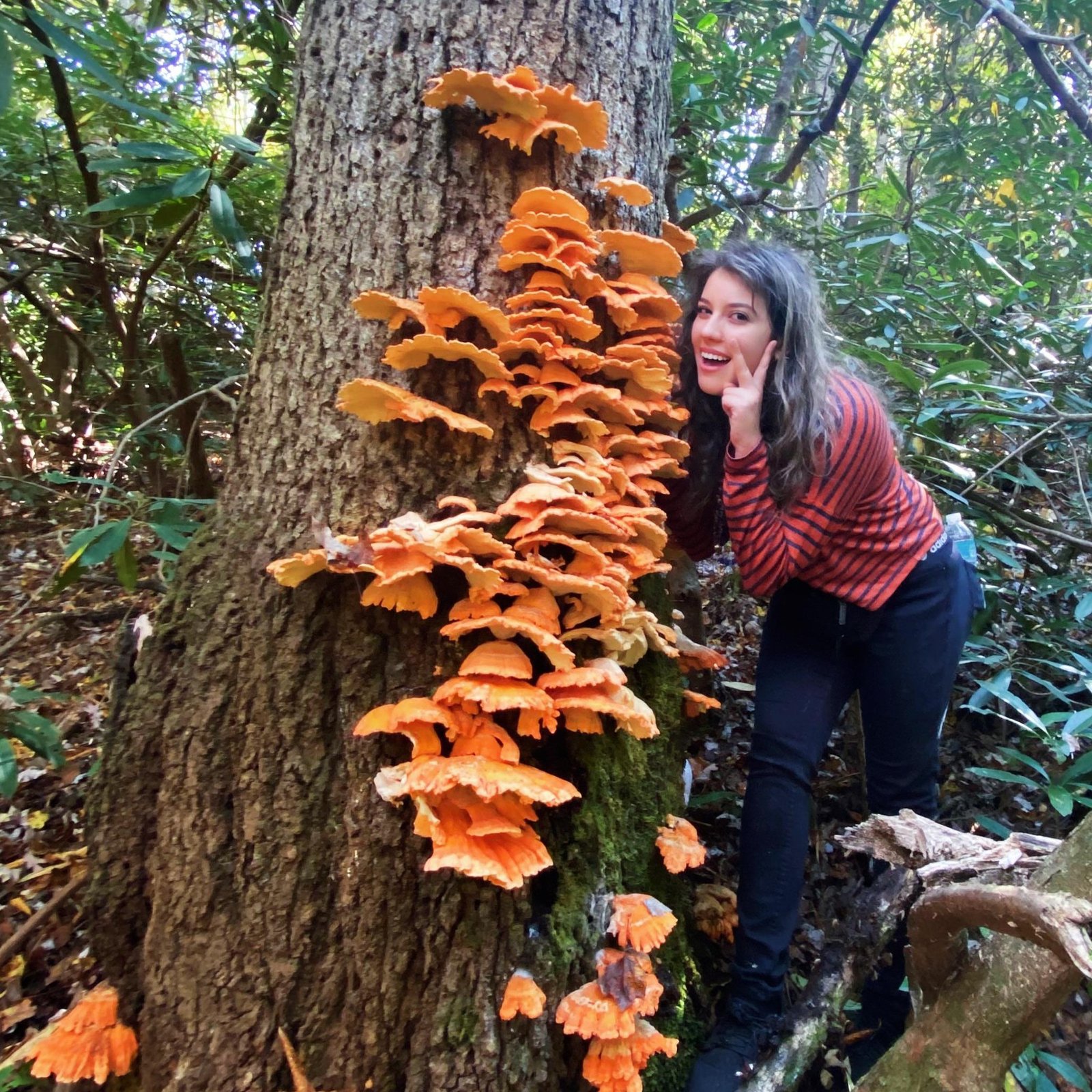
15 Common Mushrooms | That Grow on Trees in Your Yard
Discovering mushrooms on trees in your yard can be a curious and concerning sight. Mushrooms play a vital role in the ecosystem, but their presence can also indicate underlying issues with your trees. Here’s an in-depth look at 15 common mushrooms you might find growing on the trees in your yard.
1. Artist’s Conk (Ganoderma applanatum)

Artist’s Conk is a perennial mushroom that grows on decaying hardwoods. Its large, woody, shelf-like appearance can often be seen adorning trees, logs, and stumps.
The undersides of these mushrooms are smooth and white, which darkens when scratched, making them a popular medium for artists to etch designs. While they contribute to the decomposition process, their presence might indicate that the tree is decaying from within.
2. Turkey Tail (Trametes versicolor)
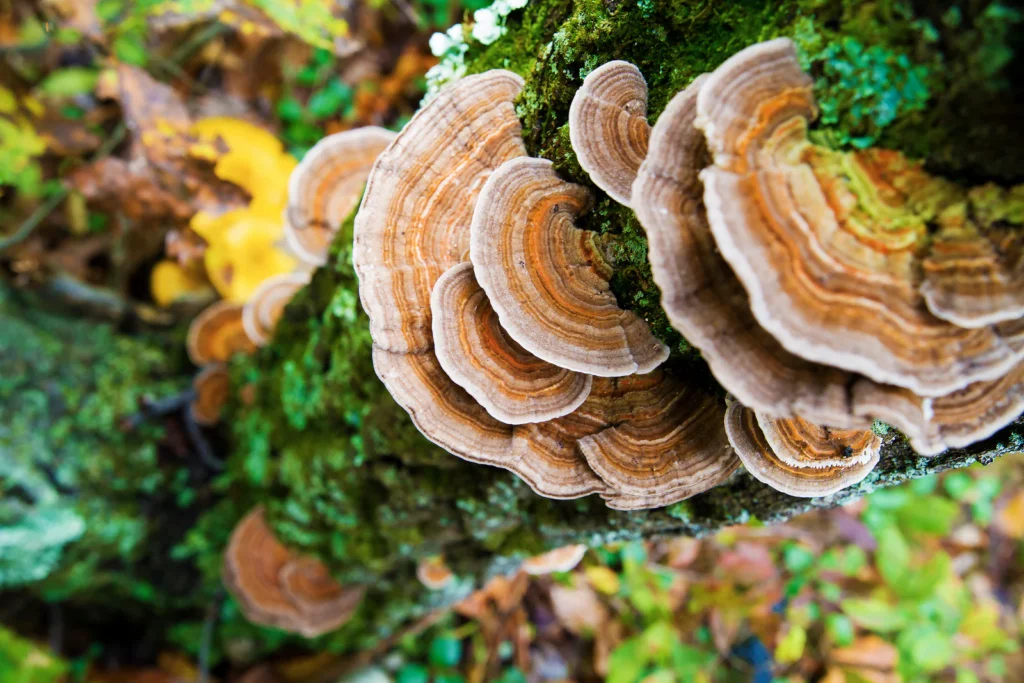
Turkey Tail mushrooms are named for their colorful, concentric bands resembling a turkey’s tail. They grow in thin, leathery layers on dead hardwood logs, stumps, and sometimes living trees.
Known for their medicinal properties, Turkey Tail mushrooms effectively break down the lignin in wood, thus playing a crucial role in forest ecosystems.
3. Oyster Mushroom (Pleurotus ostreatus)

Oyster mushrooms are popular for their culinary uses due to their delicate texture and savory flavor. These mushrooms typically grow in clusters on decaying hardwood trees, aiding in the decomposition process. They have a distinct oyster-shaped cap and are usually white to light gray.
Oyster mushrooms are saprotrophic, meaning they feed on dead organic matter, and their presence generally indicates that the tree is already dead or decaying.
4. Honey Fungus (Armillaria mellea)

Honey fungi are notorious for being parasitic mushrooms that can cause significant damage to trees. Recognizable by its honey-colored caps, it grows in clusters at the base of trees or on their roots.
Honey Fungus can cause root rot, leading to the decline and eventual death of the tree. It spreads through rhizomorphs, which are black, root-like structures that can extend several feet underground, infecting nearby trees.
5. Chicken of the Woods (Laetiporus sulphureus)

Chicken of the Woods mushrooms are easily identifiable by their bright orange-yellow color and shelf-like structure. They grow in large clusters on the trunks of dead or dying trees, particularly oaks.
These mushrooms are highly sought after for their culinary uses as they have a texture similar to chicken when cooked. They play a role in decomposing the wood and returning nutrients to the soil.
6. Shaggy Mane (Coprinus comatus)

Shaggy Mane mushrooms have a distinctive appearance with their tall, shaggy caps that often turn black and inky as they mature.
These mushrooms commonly appear on lawns and near tree stumps. They are saprotrophic, feeding on dead organic matter, and their presence is generally not harmful to living trees.
7. Reishi (Ganoderma lucidum)
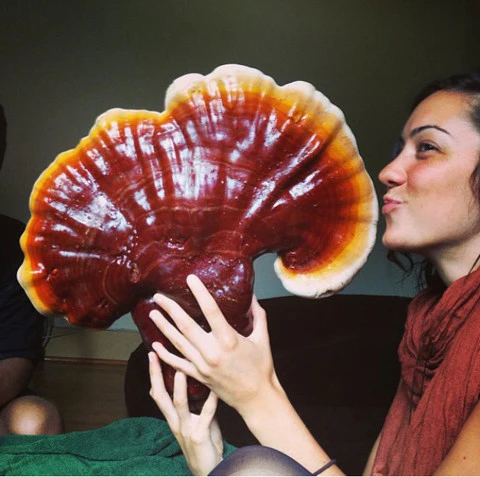
Reishi mushrooms, also known as Lingzhi, are well-known for their medicinal properties. They grow as shelf-like structures on dead or dying hardwoods, particularly oaks and maples.
Reishi mushrooms have a glossy, reddish-brown cap and a woody texture. They are valued in traditional medicine for their purported health benefits, including boosting the immune system and reducing inflammation.
8. Birch Polypore (Piptoporus betulinus)

Birch Polypore is commonly found on birch trees. It has a hoof-like shape and a leathery texture. Historically, this mushroom has been used for its medicinal properties and as a strop for sharpening knives.
It plays a role in decomposing the wood of dead birch trees, returning nutrients to the forest floor.
9. Lion’s Mane (Hericium erinaceus)

Lion’s Mane mushrooms are distinctive for their long, white spines that resemble a lion’s mane. They grow on hardwoods, particularly beech and oak trees, and are prized for their unique appearance and potential health benefits.
These mushrooms have been studied for their neuroprotective properties and ability to stimulate nerve growth.
10. Maitake (Grifola frondosa)
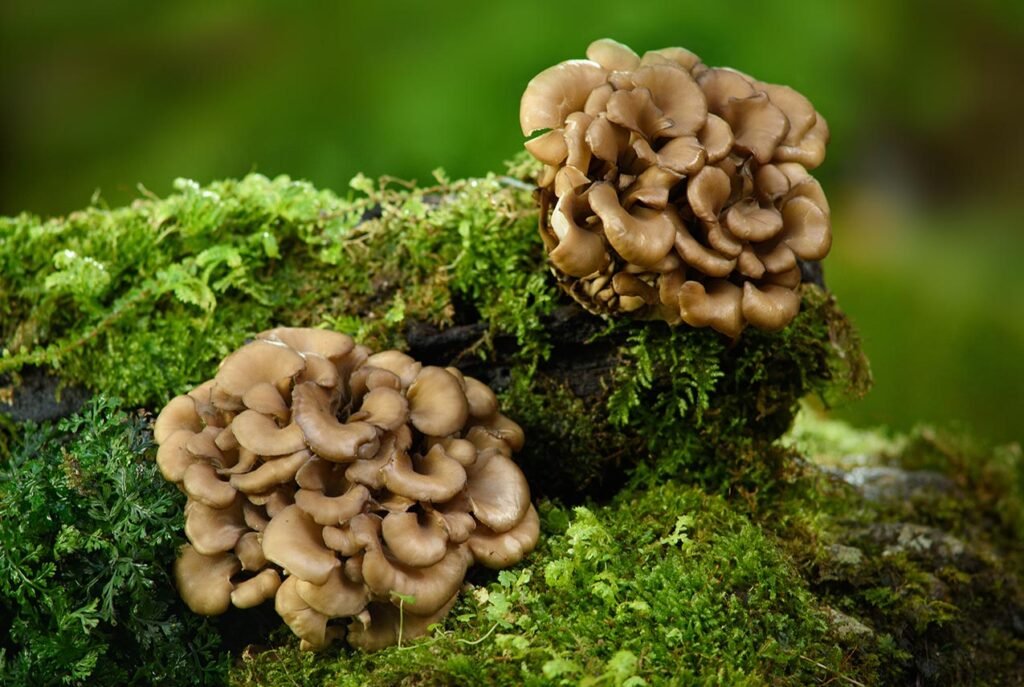
Also known as Hen of the Woods, Maitake mushrooms grow at the base of trees, particularly oaks. They form large, clustered masses of grayish-brown, fan-shaped caps.
Maitake mushrooms are valued for their culinary uses and medicinal properties, including boosting the immune system and regulating blood sugar levels.
11. Chaga (Inonotus obliquus)
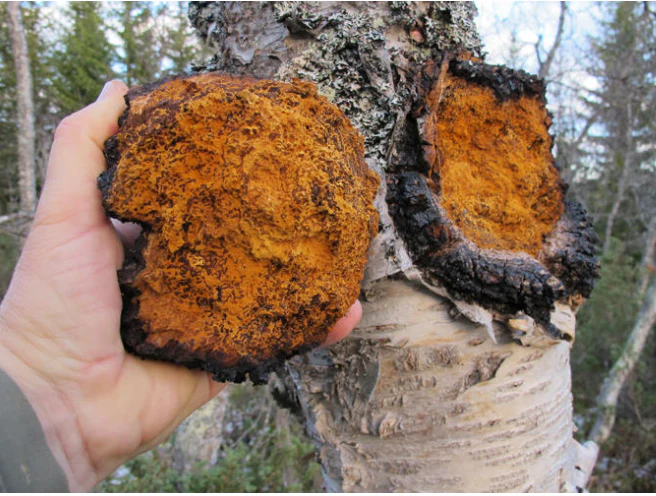
Chaga mushrooms have a rough, black exterior that resembles burnt charcoal.
They primarily grow on birch trees and have been used in traditional medicine for their potential health benefits, including anti-inflammatory and antioxidant properties. Chaga mushrooms are parasitic and can weaken the host tree over time.
12. Dryad’s Saddle (Polyporus squamosus)
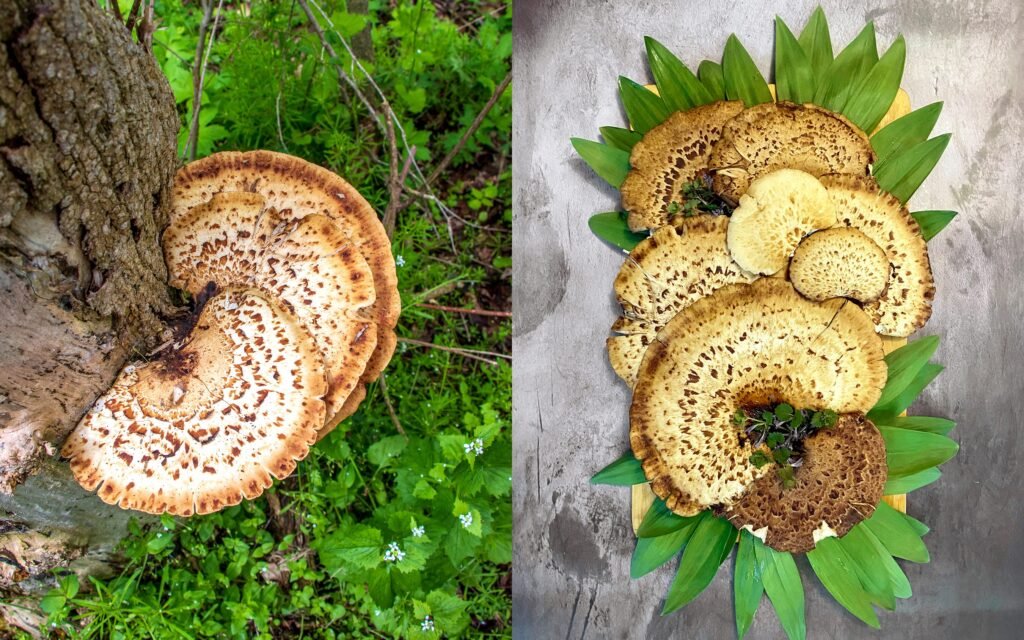
Dryad’s Saddle, also known as Pheasant’s Back, is characterized by its large, fan-shaped caps with dark scales on the surface.
These mushrooms grow on dead or dying hardwood trees, aiding in the decomposition process. They have a pleasant, cucumber-like aroma and are sometimes used in cooking when young and tender.
13. Beefsteak Fungus (Fistulina hepatica)
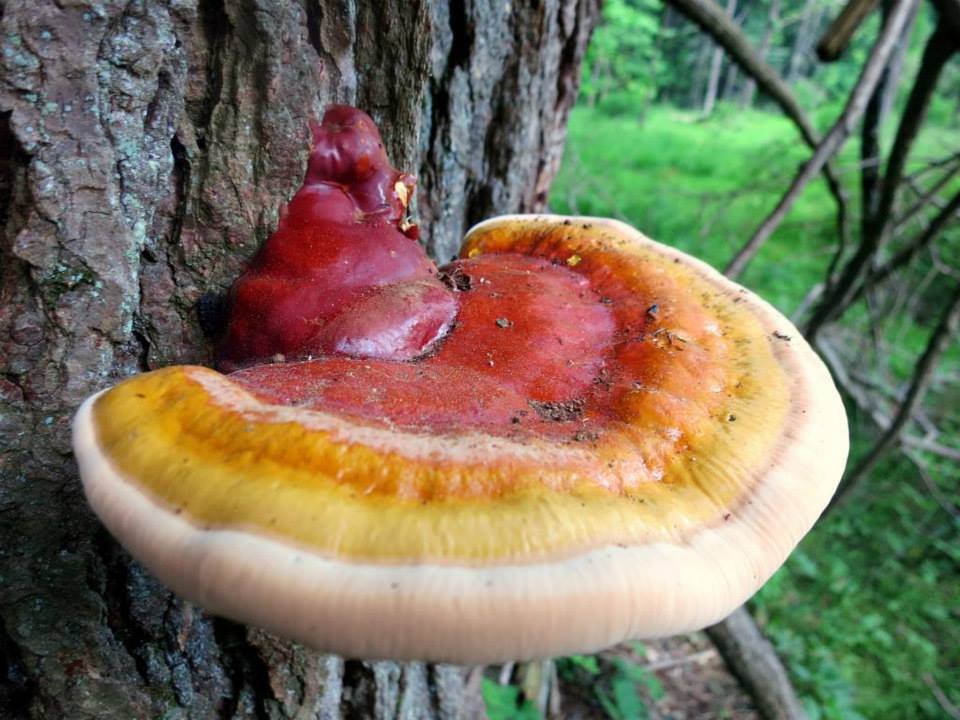
Beefsteak Fungus gets its name from its reddish, meat-like appearance and texture. It grows on the trunks and stumps of oak and chestnut trees. While it is edible, its sour taste means it is not widely consumed.
This fungus helps decompose the wood of its host tree.
14. Sulphur Shelf (Laetiporus cincinnatus)
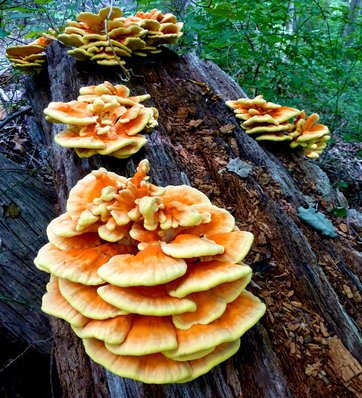
Similar to Chicken of the Woods, Sulphur Shelf mushrooms are bright orange and yellow and grow on overlapping shelves.
They typically grow at the base of trees or on stumps. These mushrooms are edible and have a texture and flavor similar to chicken when cooked.
15. Blushing Bracket (Daedaleopsis confragosa)

Blushing Bracket mushrooms have a distinctive appearance with their fan-shaped caps that bruise reddish when handled. They grow on dead or decaying hardwoods, particularly willows and alders. These mushrooms are not commonly consumed but play a role in breaking down the wood of their host trees.
Understanding the different types of mushrooms that grow on trees in your yard can help you appreciate their role in the ecosystem and take appropriate action if necessary. While some mushrooms indicate a healthy decomposition process, others may signal potential issues with your trees.
Regularly inspect your trees for signs of fungal growth and consult a professional arborist if you suspect any problems. By doing so, you can maintain the health and beauty of your yard for years to come.








